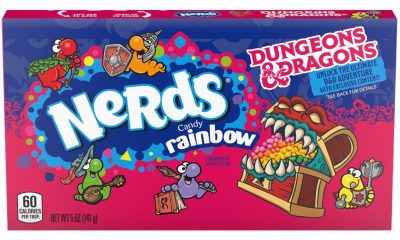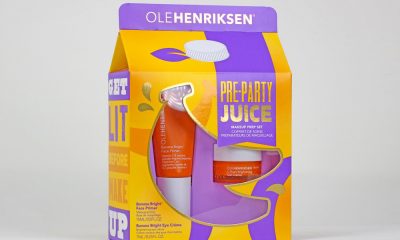
Inclusive Design Tips
Foundational principles to challenge traditional norms in package design.
Published
3 years agoon
IN LIFE, AS IN package design, four aspirations have always mattered. As we navigate our increasingly complex world and strive to connect ourselves and our brands to what makes us as designers and consumers fundamentally human, incorporating such perspectives into the design process is more critical and timelier than ever.
It is empathy and the power of embracing differences and recognizing the opportunities inherent in evolving our craft with fresh and humble eyes that drives Inclusive Packaging Design at Microsoft.
Let’s start here: Inclusive design is fun if for no other reason than creating inclusive and accessible packaging takes lots of collaboration. To extend an ethic of inclusivity across a diverse range of product packaging and deliver moments that will be meaningful to the widest possible audience takes the talent, skills and expertise of many. It’s these diverse and potent perspectives, however, that makes the journey and end results so exciting.
It takes courage to build things differently, to embrace the possibility of failure, and to continue to challenge yourself and traditional norms while under pressure. To simultaneously create humane and deeply functional packaging takes commitment, and to deliver curated, mindful and detail-oriented experiences isn’t easy. Having the right culture helps; a learn-it-all culture versus a know-it-all culture fosters creativity and exploration. Commitment from your organizational leaders to push boundaries and to shape work that embodies the best of what your brand can be is also important.
Microsoft’s unique path has taken us all over the world these past few years and given us the opportunity to engage with incredible organizations, communities and people. It has been a privilege to have had access—and to have learned from—such passionate individuals, all part of the mosaic that has informed our inclusive work to date. And there is so much more to learn and do.
Ultimately these relationships and learnings have reshaped our creative process and how we define packaging success, and we are inspired to share and improve in partnership with others.
Below I share some of our foundational principles for designing inclusive packaging as a starting point for those who might wish to find their own path forward and lend their voice to this growing chorus of change.
Recognize Exclusion
Exclusion occurs when designers approach their work through the lens of their own biases (unintentionally or otherwise). Let’s face it; we often generate or evaluate ideas based on what we know.
Problem solving from a singular or personal vantage point is comfortable, even intuitive, but limited. As packaging designers committed to creating inclusive, accessible experiences, we must seek out exclusions, in whatever form they might take, and see them as opportunities for growth and to inspire new ideas and solutions.
Designing for inclusivity opens up our products and services to more people and reflects the true diversity that is the human landscape.
Learn From Diversity
No doubt about it, human beings are experts in adapting to diversity.
As a methodology, inclusive design puts people right in the center of the creative-and-developmental process and draws on the full range of human diversity as a means of unearthing fresh and expansive insights. Seeing human diversity for the opportunity it is and learning from those able to offer the widest possible range of perspectives is a resource unparalleled.
All people learn, grow and adapt to the world around them; as designers, we should aspire to be no different in our work.
AdvertisementSolve for One; Extend to Many
While we all have unique abilities and limits to those abilities, there are universal ways that human beings experience the world.
Inclusive design works across a spectrum of potential abilities, creating connection and universality when conceived and executed well. For instance, designing focused solutions for people with permanent disabilities can result in designs that benefit a much larger group. By cleverly working with creative constraints, solutions can take on an enormous and positive scope of impact. To our thinking, designing with constraints in mind is simply designing well. Or it can be.
Nothing About Us Without Us
The mantra “Nothing about us without us” underscores the conviction that people with disabilities know what is best for them, and that an enlightened creative process will include them as participants.
Customers with particular needs have a voice and should be out front and center as visible leaders in the creation of experiences. A process that leverages the direct (and often unexpected) insights from its intended audience, as co-architects, stands a much better chance of delivering experiences that truly resonate.
The power of designing with your customers — rather than simply for your customers — is one of the most important lessons we’ve taken to heart, so far.
As mentioned, this is just a jumping-off point, but these principles serve Microsoft Design well. There’s so much more to share, but this gives a glimpse into what drives our thinking and shapes our work. It’s a process of discovery, and we couldn’t do it without our partners and communities at large, but we’re building momentum and can’t wait to see where the journey
leads next.

Kevin Marshall is creative director, packaging and content, at Microsoft. In his role, Marshall leads a world-class team of industrial and graphic designers and spearheads the packaging vision of Microsoft’s creative strategy for brands worldwide. Partnering with key stakeholders, e.g., the Central Marketing Group (CMG), industrial design team, user experience (UX) groups, product and brand marketing teams and the manufacturing supply chain (MSC) team, Marshall oversees the development and evangelization of the “One Microsoft” set of brand guidelines for structural packaging. Prior to joining Microsoft, Marshall was creative director of Marc Rosen Associates, a design firm for the luxury, beauty and consumer packaged goods industry and global packaging design director for Avon Products Inc. He has worked with international clients such as Coty Beauty, Procter & Gamble, Estée Lauder, Bath and Body Works, O’Boticario and Brown Forman Co. to launch memorable programs that delight consumers, build brand equity and leverage the virtues of inspired design.
SPONSORED VIDEO
Branding with Ferocity – Thinking Like an Indie Brand
Get a better understanding on how to leverage new technologies to engage and delight shoppers, sustainability’s role in product and package design – being sustainable and premium are not mutually exclusive, plus best practices and tips for collaboration and how to launch new products and refresh existing product line-ups and brands.
You may like
Advertisement

GO MINIMALISM . . . HOLD ON A MINUTE!
Sustainable, 100% Recycled Transparent Sheeting is Now a Reality!

Kroger, Walgreens to Dedicate Section of Their Stores to Reusable Packaging

6 Marketing Tips for Ecommerce Brands to Win the Holiday Shopping Season

New Wunderoots Branding Celebrates the Carrot

Fact or Fiction? The Truth about Eco-Friendly Packaging

BXP May 2021 Think & Clink

Unilever Raises Bar for Accessibility with Degree Inclusive

Crown Royal’s Limited-Edition Pack Designed by Oscar-Winner

Coca-Cola Explores World of Paper Bottles
Subscribe

BULLETINS
Get the most important news and business
ideas from BXP Magazine's news bulletin.
Latest Tweets
Advertisement








